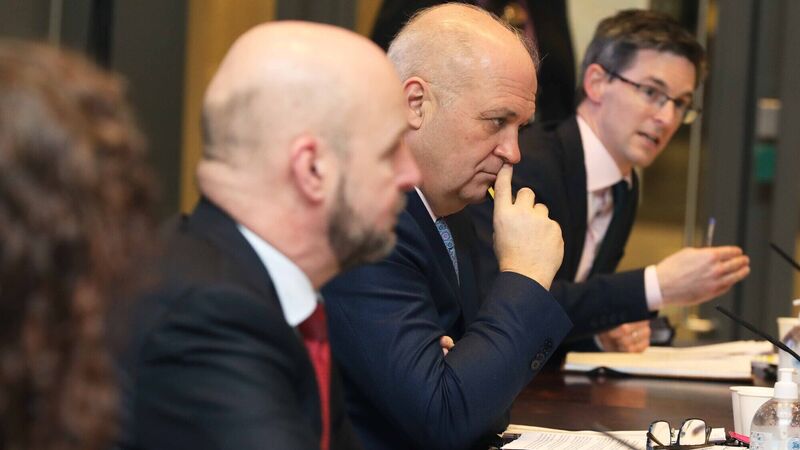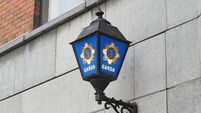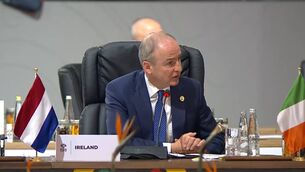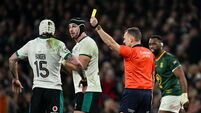Health officials refuse to speculate on lifting restrictions as Covid-19 cases pass 200,000 mark

Professor Philip Nolan, chair of the Irish Epidemiological Modelling Advisory Group; Dr Tony Holohan, chief medical officer; and Dr Ronan Glynn, deputy chief medical officer at a media briefing at the Department of Health. Picture: Leah Farrell / RollingNews.ie
The number of Covid-19 cases in Ireland continues to decline, but has now passed the 200,000 mark since the pandemic began.
Health officials announced a further 1,318 cases of the virus yesterday, breaking the 200,000 mark.
The country's r-rate — the rate of reproduction of the virus — has declined and is now between 0.5 and 0.8, health officials confirmed.
But, Professor Philip Nolan, chair of the epidemiological modelling group, said cases will likely rise in the coming days as testing of close contacts of confirmed cases has resumed.
He said: “We will see some uptick in coming days as those tests feed into the system and if we keep up our efforts it will feed into the [downward] trend.”
He predicted that to reach 500 daily cases by the middle of February would be an “extraordinary performance”.
Mobility data is showing clearly people are staying home, although not as confined as they were in March or April.
Responding to anecdotal fears that traffic is rising, Prof Nolan said: “There was a small rise in traffic mobility. In general, I think we are hyper-sensitive [to changes]. We have forgotten what traffic was like in January [last year].”
Chief medical officer Dr Tony Holohan also stressed that the current levels of the disease still remain dangerously high.
He would not speculate on lifting restrictions or increasing numbers at events such as weddings, saying it is too early. And he repeated advice against travelling past the 5km mark, especially flying on holidays, noting the health minister has now signed into law new powers for the gardaí around this.
In recent weeks the National Public Health Emergency Team had expressed concern the case decline was slowing or had plateaued.
Yesterday, it said it now seems this was a result of people not going for tests at the weekend and so it seemed the case numbers rose mid-week, when a longer overview showed a slow but steady decline.
Outside of tracking the disease, the main focus for the health system now is the vaccine roll-out.
Dr Lucy Jessop, director of the National Immunisation Advisory Committee, said the decision taken in Ireland to only give the AstraZenca vaccine to younger people for now is based on the available data.
She did not wish to comment on why the UK has taken a different decision.
Dr Jessop would not speculate on whether younger people would be moved up the vaccine schedule now to make sure that supplies of AstraZeneva arriving next week will be used in a timely fashion.
The data issued yesterday shows the 14-day incidence rate of infection dropped again to 397.1 per 100,000 of population, putting Ireland among the three European countries with the fastest rate of decrease from very high levels.
This rate in Waterford is 612.9, in Limerick 374.6, and Cork 323.7 while Kerry has the lowest rate in Munster at 183.5 per 100,000 of population.
The so-called UK variant or B.1.1.7 has now been found in 75% of the samples tested by the National Virus Reference Laboratory, meaning it is now the dominant strain of the virus here.










